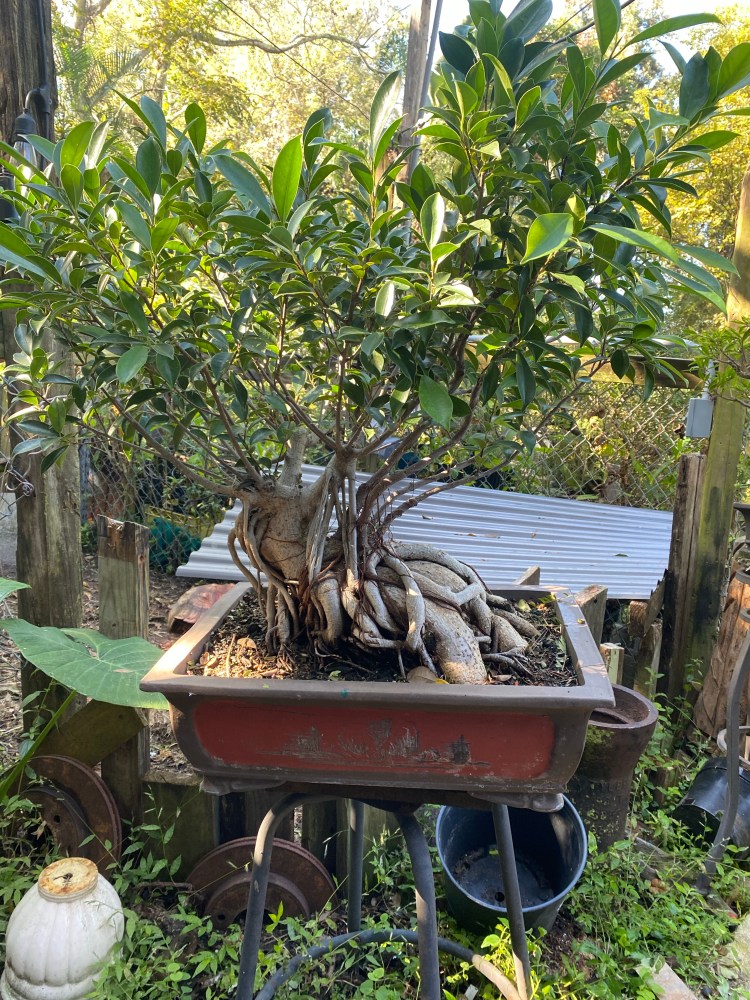
We have a big boy in The Nook today.
Wait…..?
Today? Not tonight? The sun is out? Yup. I’m not a vampire, I may stay up late but I don’t sleep the day away. And besides, it’s a Sunday and I have some free time today to work some trees.
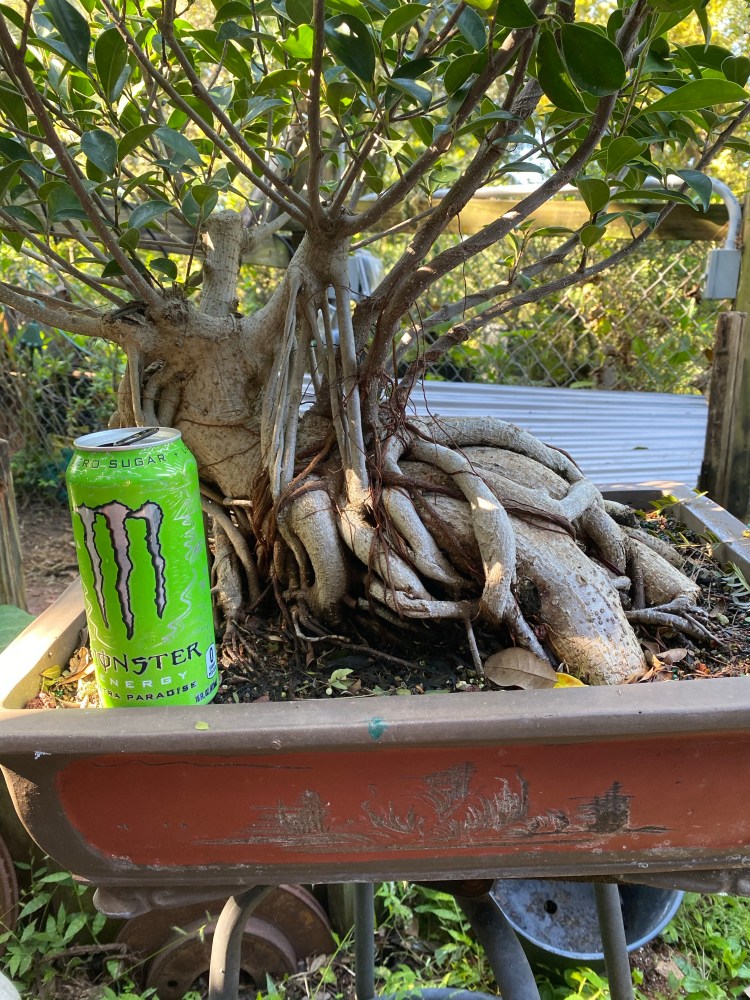
It’s a friends tree, a ficus microcarpa, the plain old species (to be precise, F. microcarpa var. microcarpa) . Looks like a seed grown one too, by the big root buttress, and the big leaf, which is slightly pear shaped on the mature leaf (called oblanceolate, by the pointy headed acedemics, meaning lanceolate, or lance tip shaped, but with a thinner base).

I’ve been looking at the tree for a few days, and I think, below, is the back. And don’t worry, I’ll explain what I’m doing as I work, with each pic, of course.

The four branches below are not part of the design. They are coming straight up from the root base, and generally that’s reserved for the apical shoot, which should be the continuation of the trunk.

The branch I’m pointing to below is gone too. It is also growing too straight up. If I were making this a full banyan style, I might keep it, as they tend to have multiple apices from the base.

And the angle is straight up, and an apex on the back of the tree tends to grow away from the main apex (I don’t like the word apex, except in initial stylings, because trees don’t have a single shoot at the top of a tree, except for Christmas trees, and that’s only so you can put a star or Angel or whatever tree topper you may use. Deciduous trees (though a ficus isn’t deciduous by general rule, they grow with a deciduous habit) have crowns, not an apex. I think the misnomer “apex” comes from one of the original books printed in English, which were translations from Japanese, to, amazingly, German, and then to English (The Japanese Art of Miniature Trees and Landscapes by Yuji Yoshimura 1957)
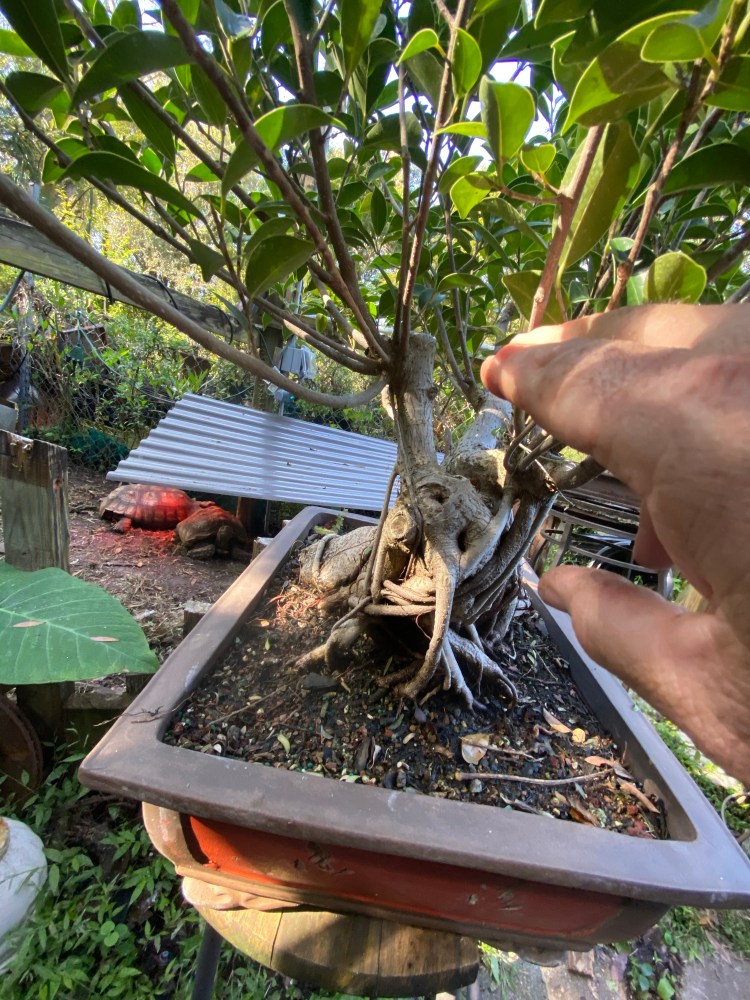
Back at the front, I can choose either the left or the right as the “apex”.
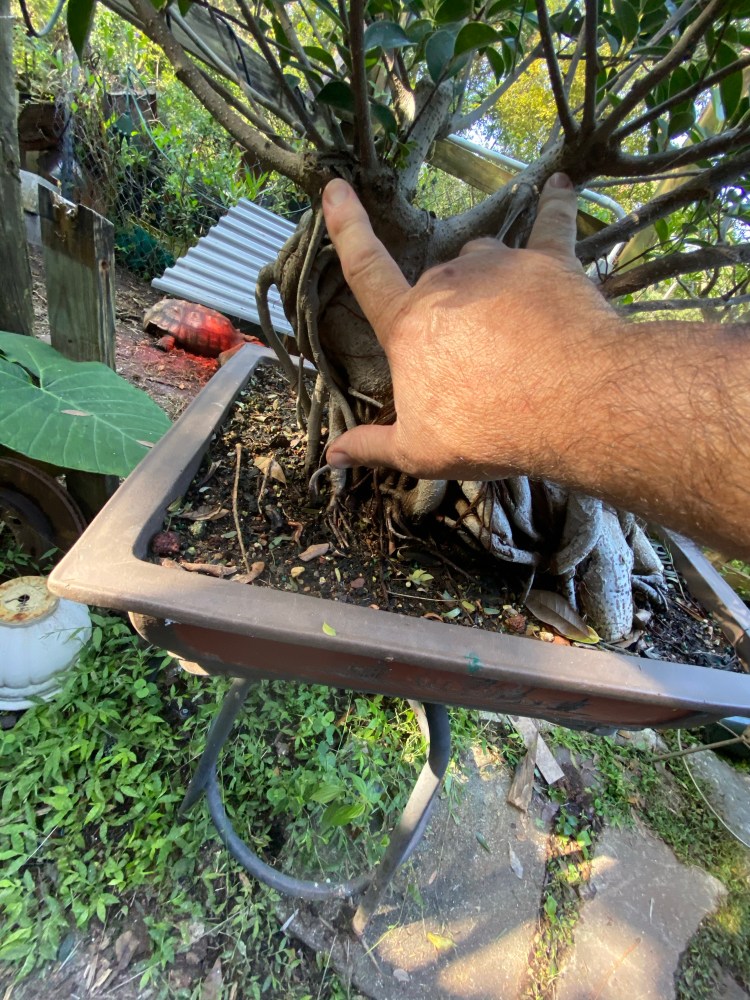
Today I think I’ll be going to the right to create balance because a tree with a big base like this one needs stability.
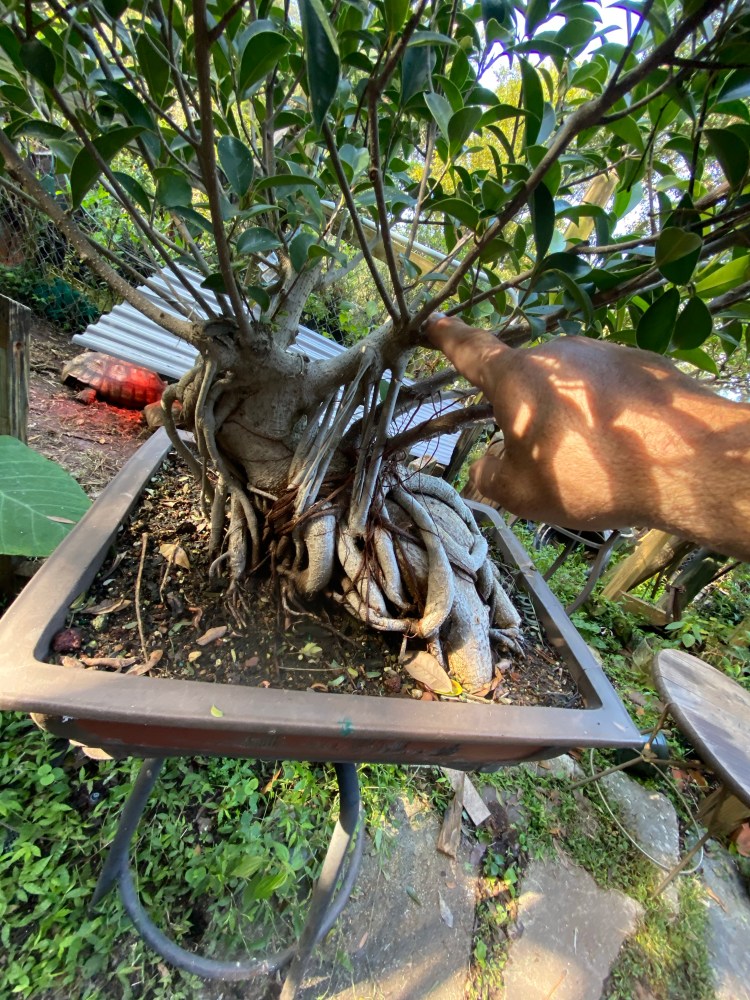
The left branch (one of them) will be the first branch. Let’s get the tools out, shall we?
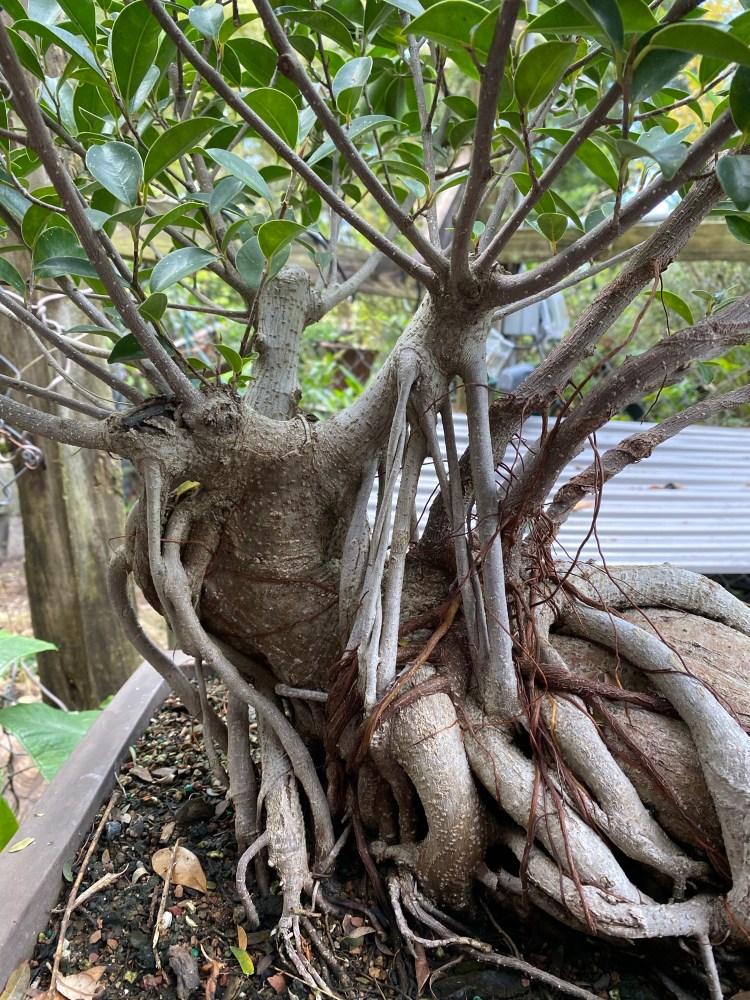
After the first pruning, getting there.
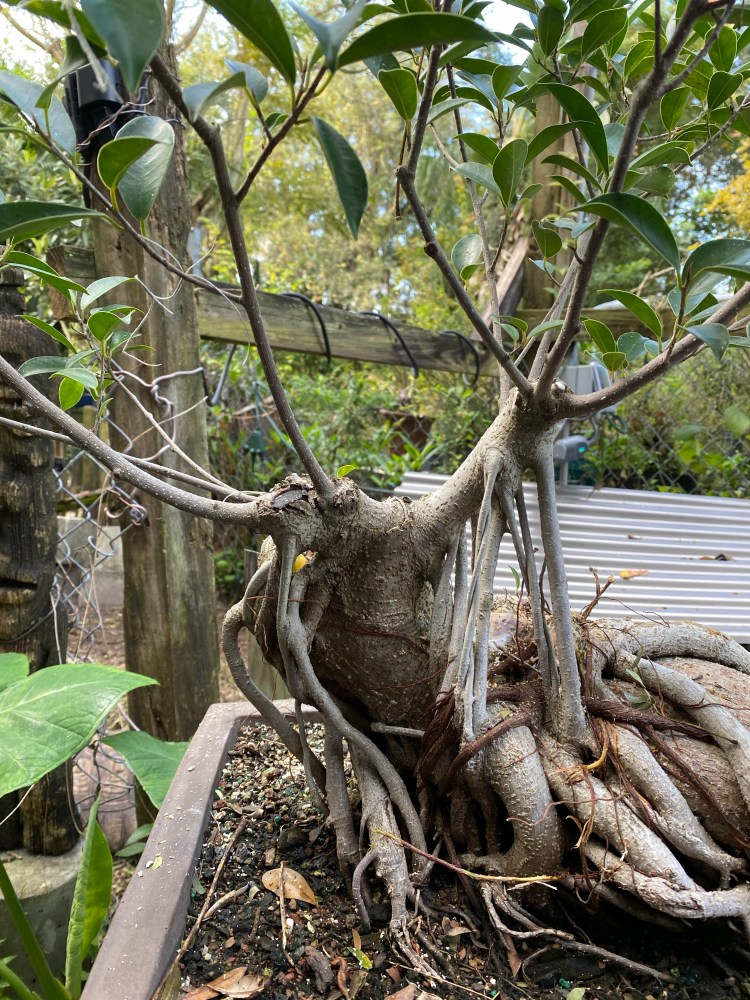
From the back.

The right side…..looks like a cross between a rubinesque nude, a Japanese manga, and a lovecraftian nightmare, replete with extra tentacles.

Left side.

And yes, the rough hewn saw marks need cleanup.
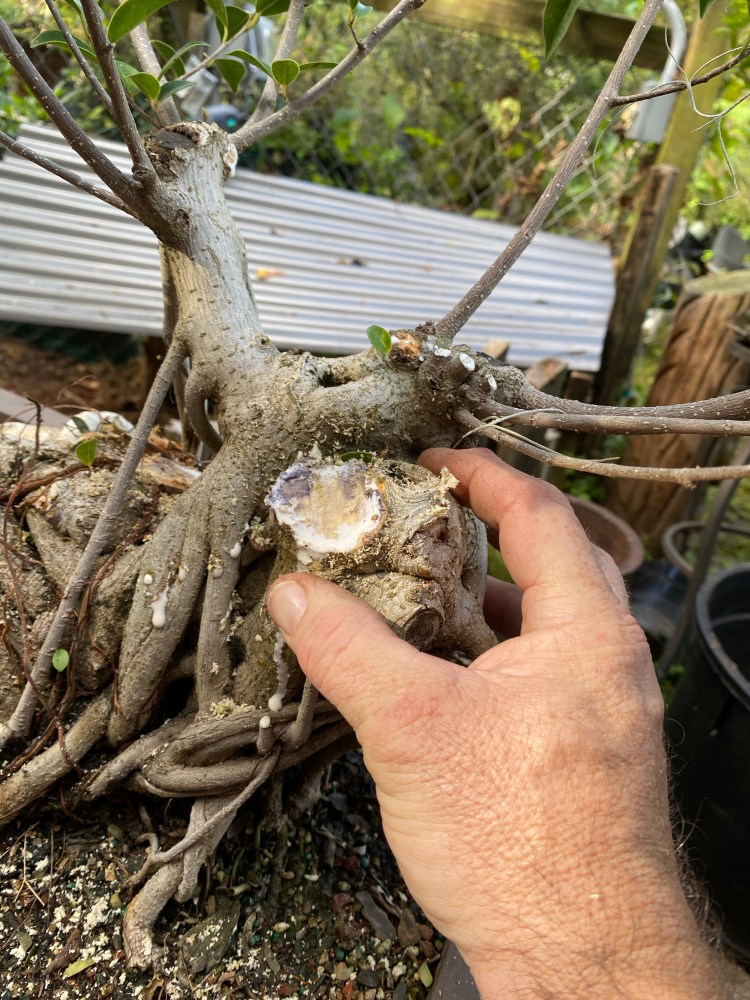
And I’m still on the fence on this branch (funny, that phrase. Sitting on the fence is awfully painful, yet so many people do it)
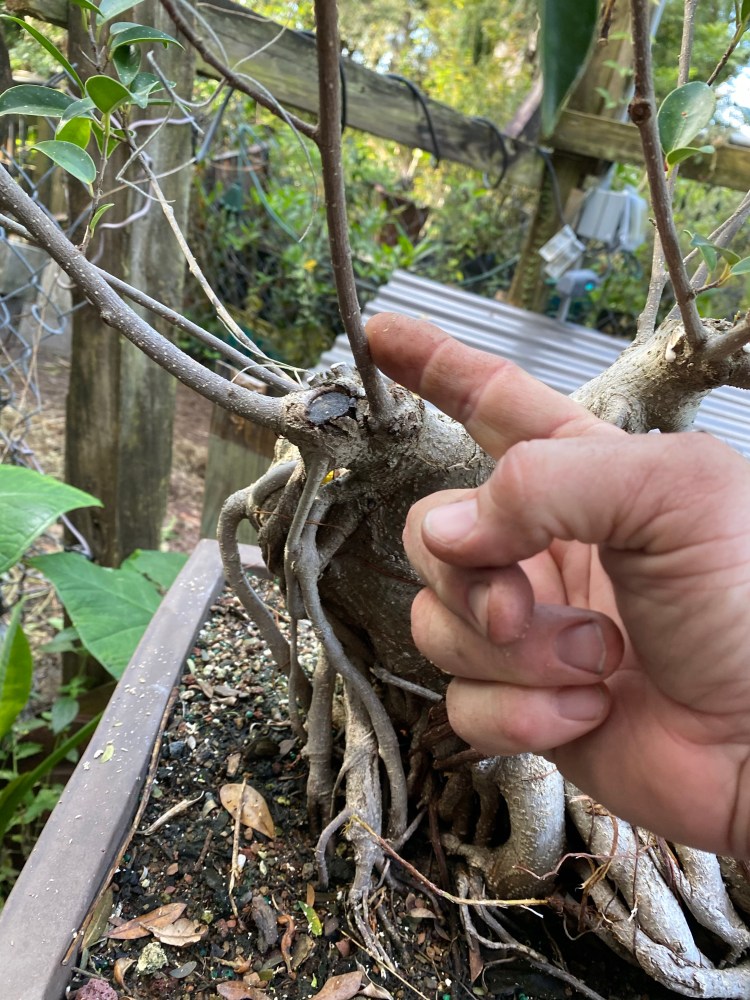
I could use this one (the one I’m bending down) to take the place, but I’ll make that decision with the second scissor pass.

This is me pointing.
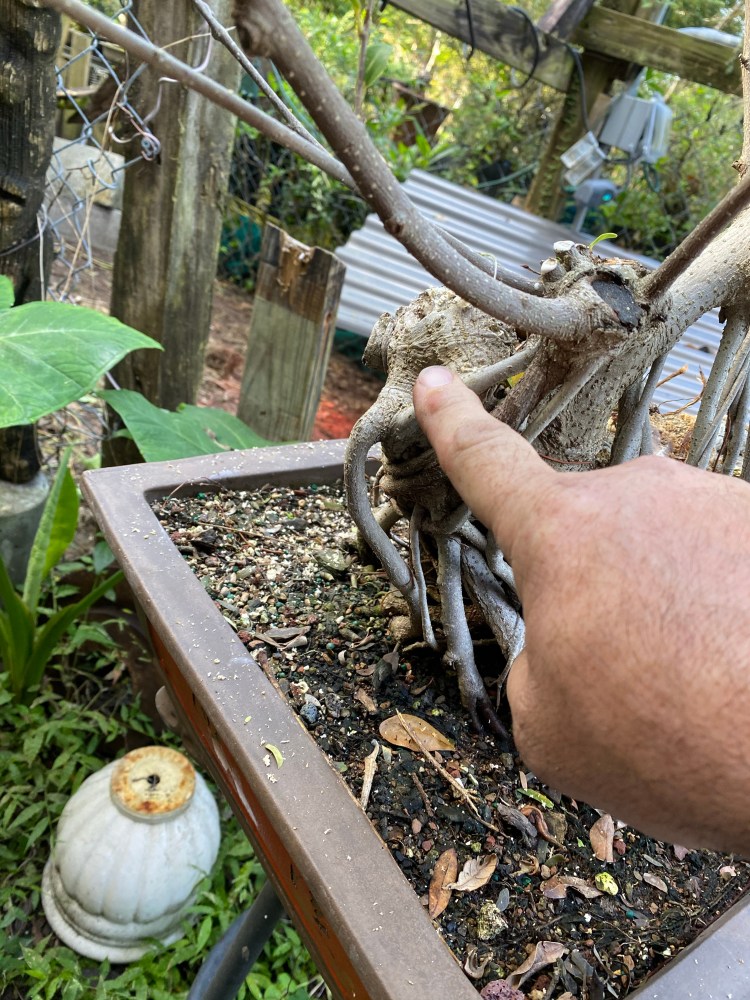
Kidding. I really wish the branch on that nub was still there. It’s a better spot for the “first” branch (it’s best to situate branches on the outsides of curves. It’s tends to look better compositionally, and that’s how branches get curves; the branch causes the tree to grow more in that spot and “bends” the tree in that direction) but I’ll have to make-do with the one I’m pointing to below.
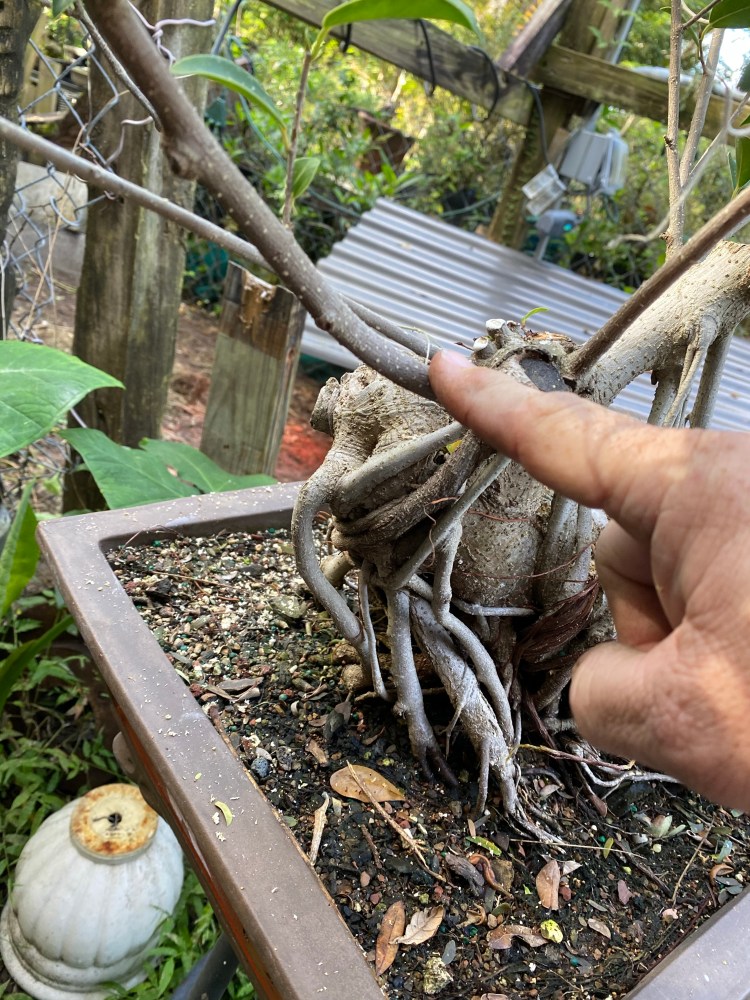
And this is me pointing, again.
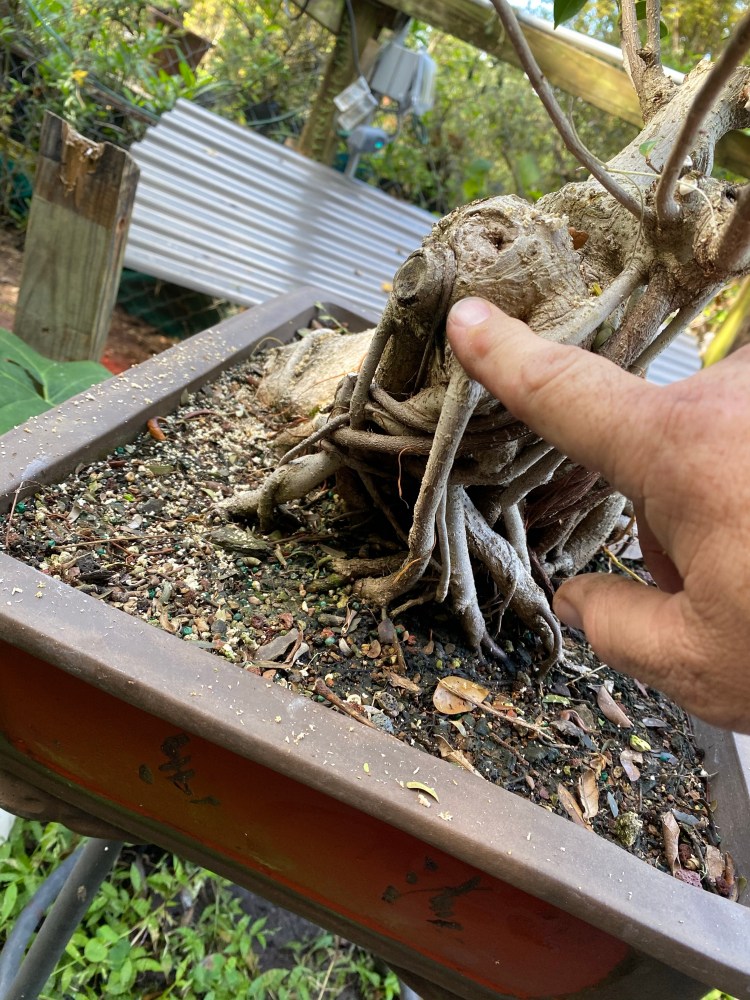 They say you shouldn’t point out flaws because though your pointing with one finger forward, there are three more pointing back at you. You solve that by pointing with your whole hand…..
They say you shouldn’t point out flaws because though your pointing with one finger forward, there are three more pointing back at you. You solve that by pointing with your whole hand…..
Uh oh! We have a problem:
See spots?
Spots on leaves?
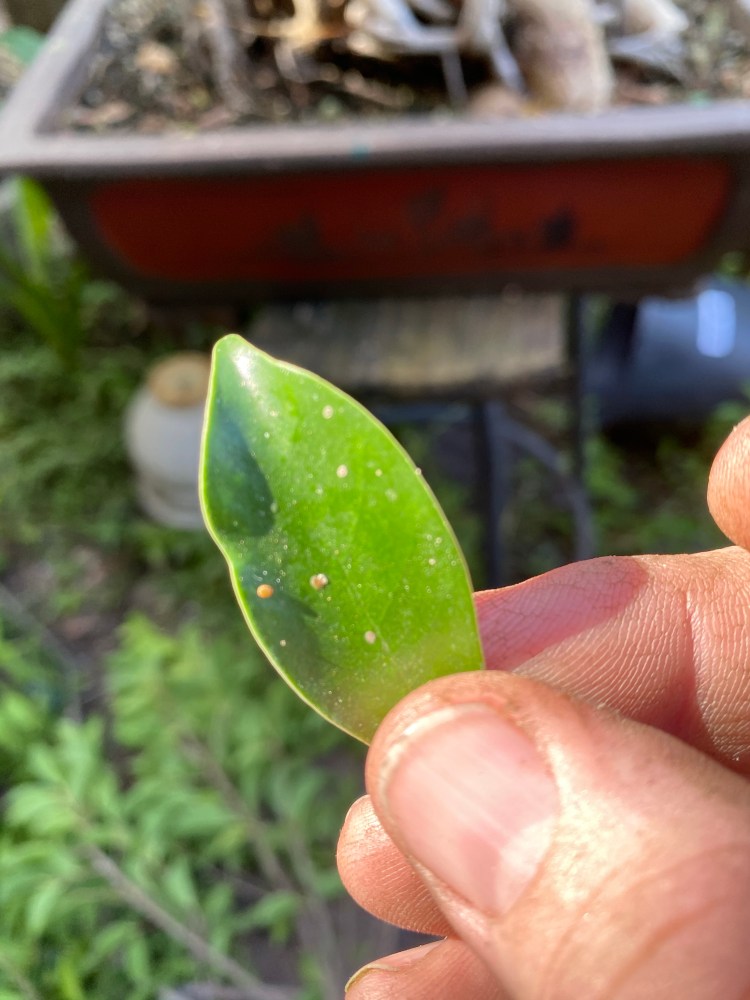
Spots on front and back?
Spots not good.
Spots mean trouble.
Spots bad. See spots run.
Spots go bye bye…….
Sorry, I got lost in my childhood for a moment.
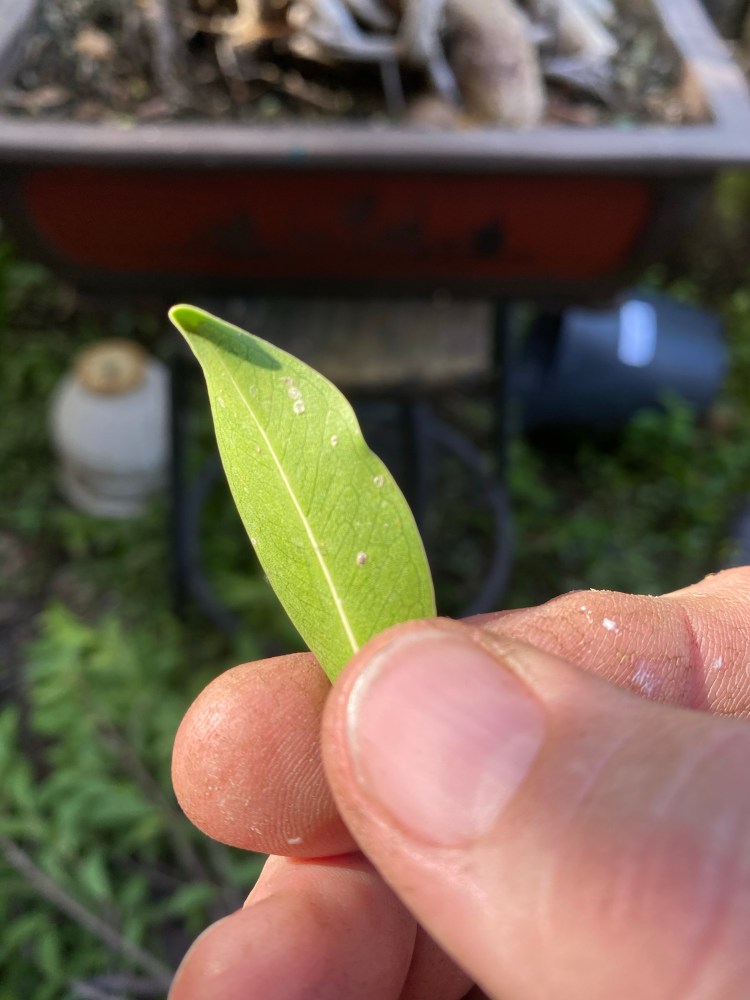
Those spots are whitefly eggs. I don’t see any active whiteflies, which is good, but the eggs can still hatch. Which is bad. Whitefly are evil.
The new growth doesn’t have any sign of them, so I hope it’s an old infestation. But my normal method of treatment is to defoliate the tree, bag those leaves and throw them in a sealed garbage can, then treat the tree with a systemic insecticide.

That’ll come later though. First, it’s time for…
🎶”Clean up clean up, everybody do your share…”🎶
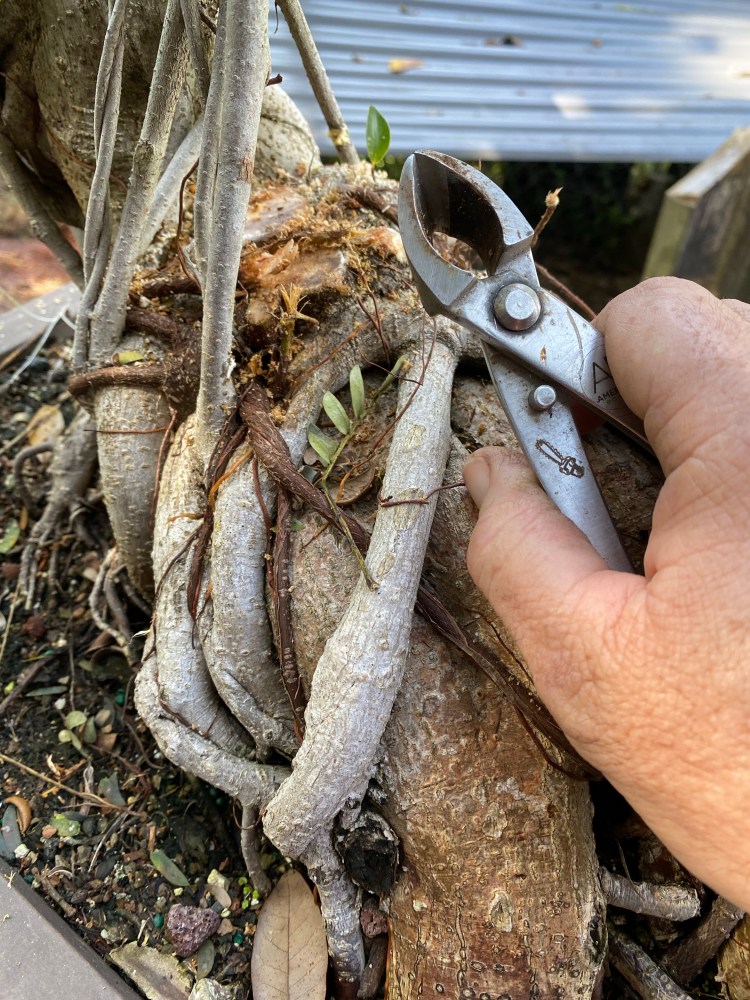 sorry, still channeling my childhood.
sorry, still channeling my childhood.
Next step, all the cuts will get a nice smooth cut.
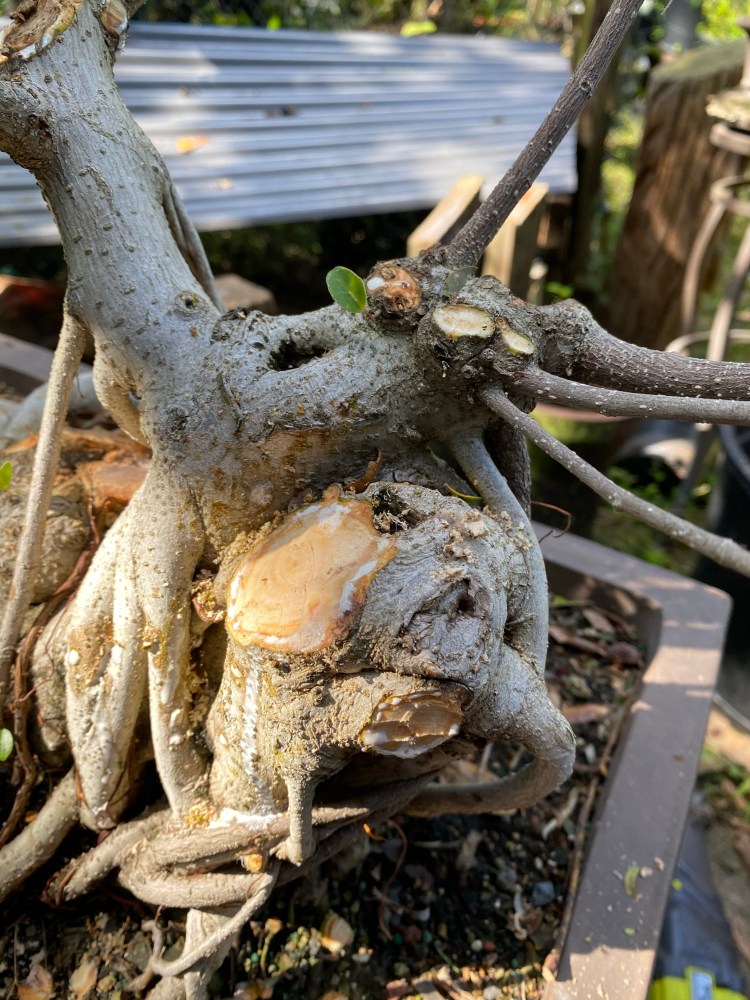
I used a saw to remove the branches and a little bit of the treatment from some sharp concave cutters will clean up the saw cuts well.

And don’t forget some touch up on older pruning scars too, a wound tends to stop rolling over after two years, so if you recut the leading edge, you’ll reactivate the healing.
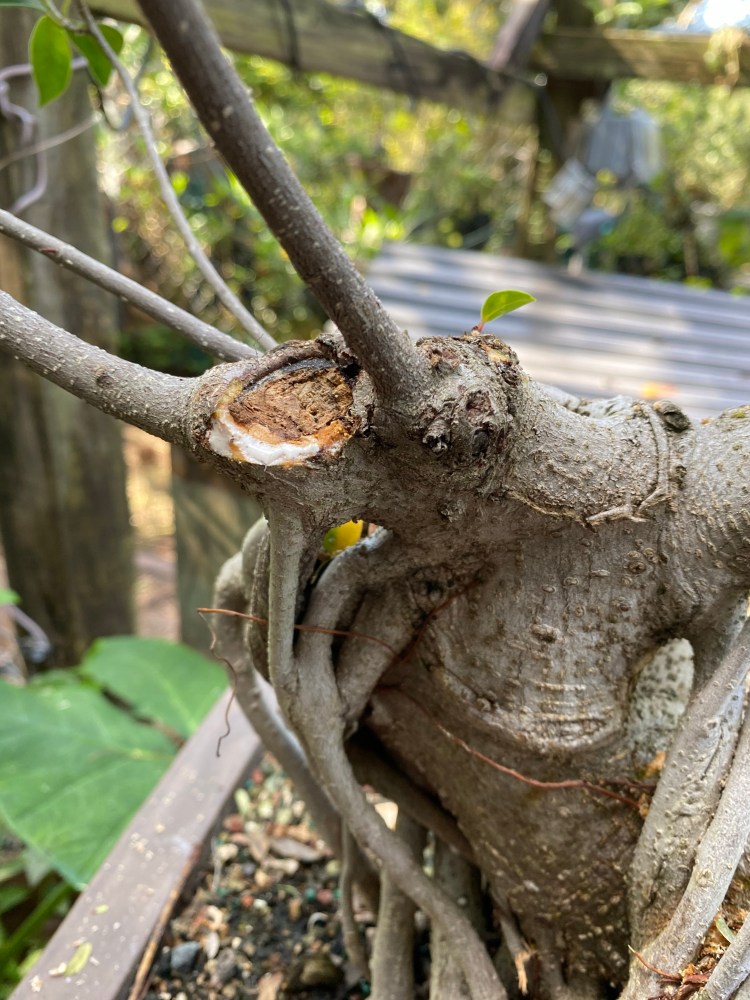
Which wilI help heal them faster.
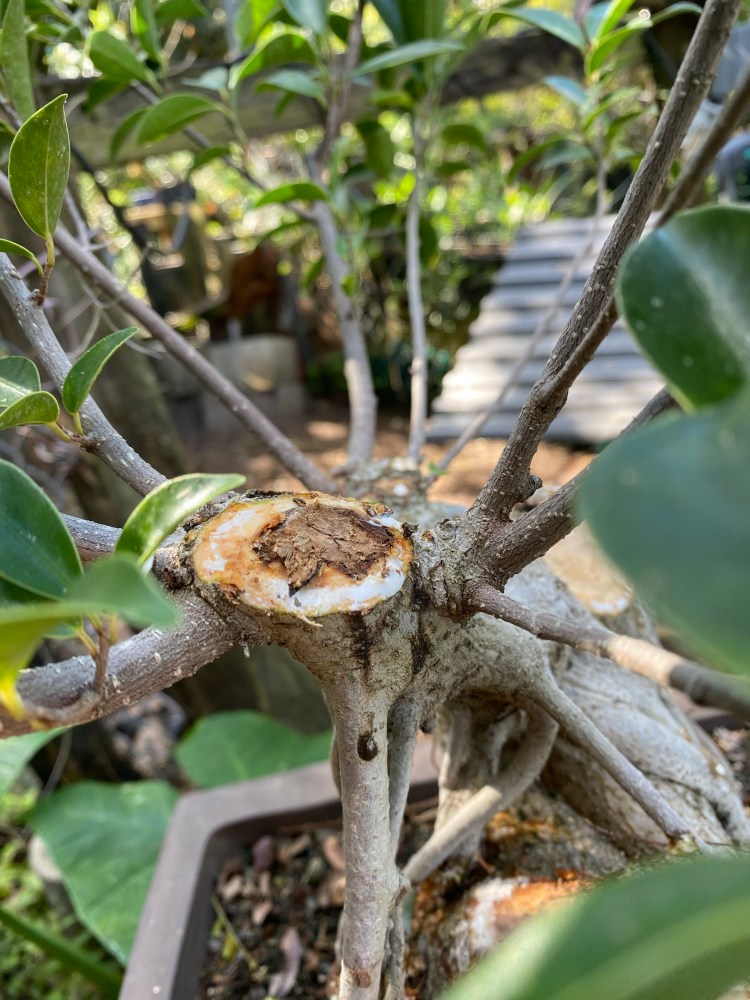
Now it’s time for the second chop.
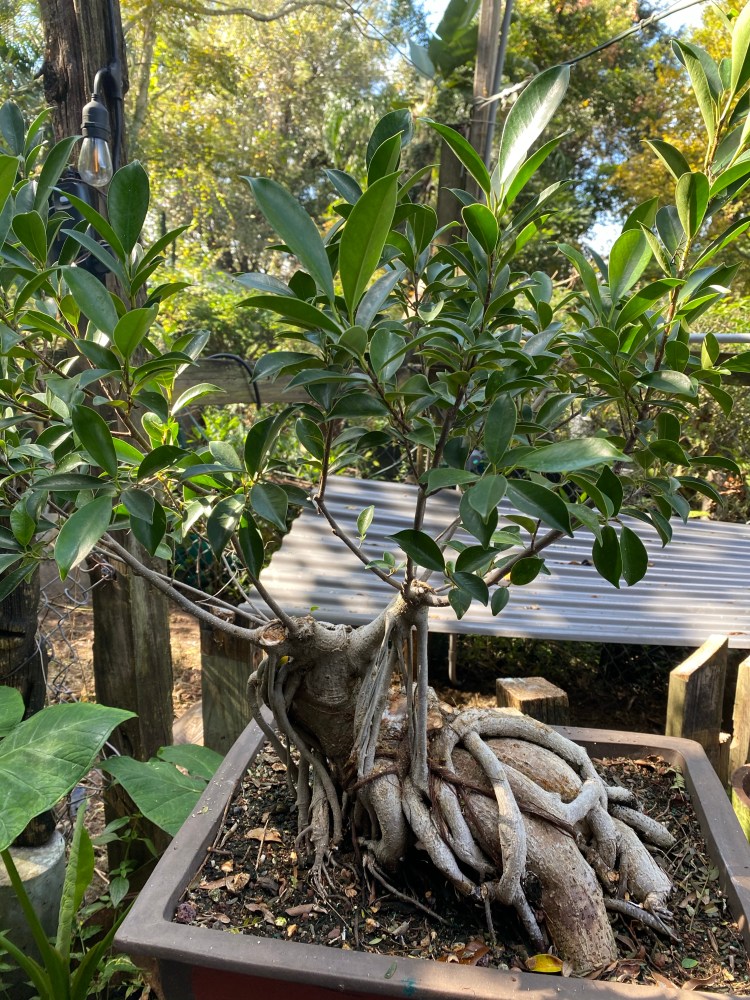
Which includes pruning for taper. I may need the branch (below) to be this long, in the final design, but the whole idea of scaling a tree to look bigger than it is to promote taper…..thick to thin, and we do that by continually chopping for taper.

Hmmmmmmnnn….don’t like the three…

Try to make the divisions of branches and trunks split into two. More than that and the junction will swell in an incongruous and unnatural way.

How much is too much to remove in winter? Here’s the aftermath after the first cut:

And the second cut:
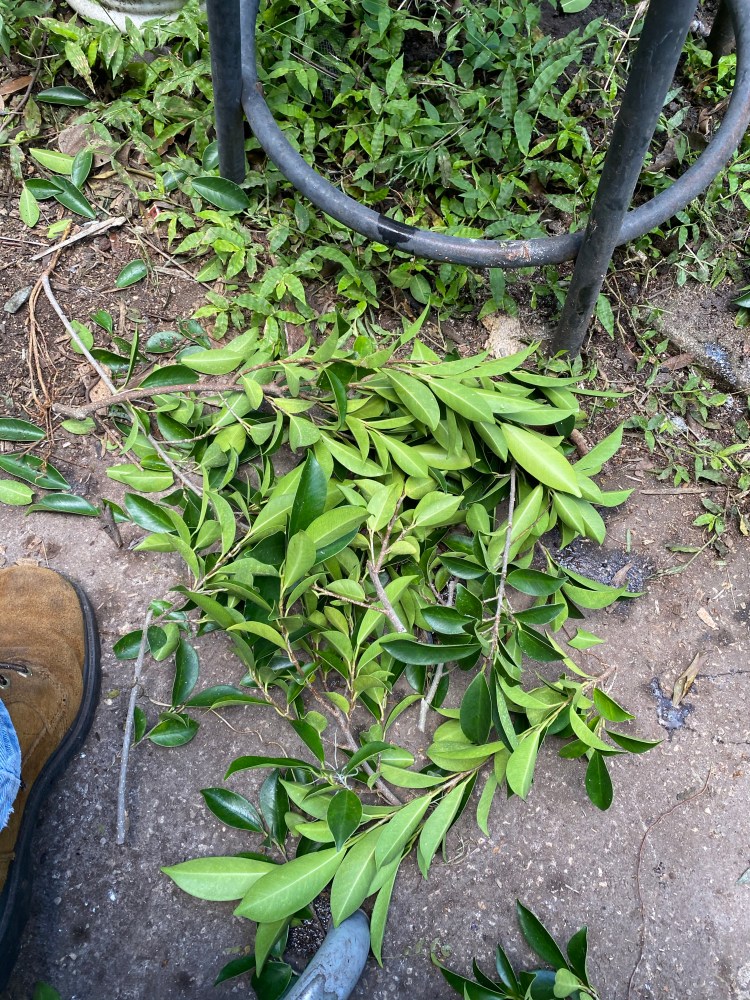 Obviously not this much. And don’t think that me being in Florida means I can do more. If your indoor set up can keep the tree above 70° F (22° C) and you give it adequate light, you, too, can develop a tree in your house or basement.
Obviously not this much. And don’t think that me being in Florida means I can do more. If your indoor set up can keep the tree above 70° F (22° C) and you give it adequate light, you, too, can develop a tree in your house or basement.
I don’t like my options here, like I said earlier. Three strong branches from the same place. That’ll cause a bulge that’s just not conducive to a smooth composition.

I was saving the left branch to fill in this hole..

But I think I can use a back branch to “hold the place” and fill in the hole until I get some side branching up higher.
Sooooo…….

Now I’ll use the left branch as the “apex” and try to make it look good, for now.

And after some wire:

When it’s time for a repot, I’ll move this aerial root out….
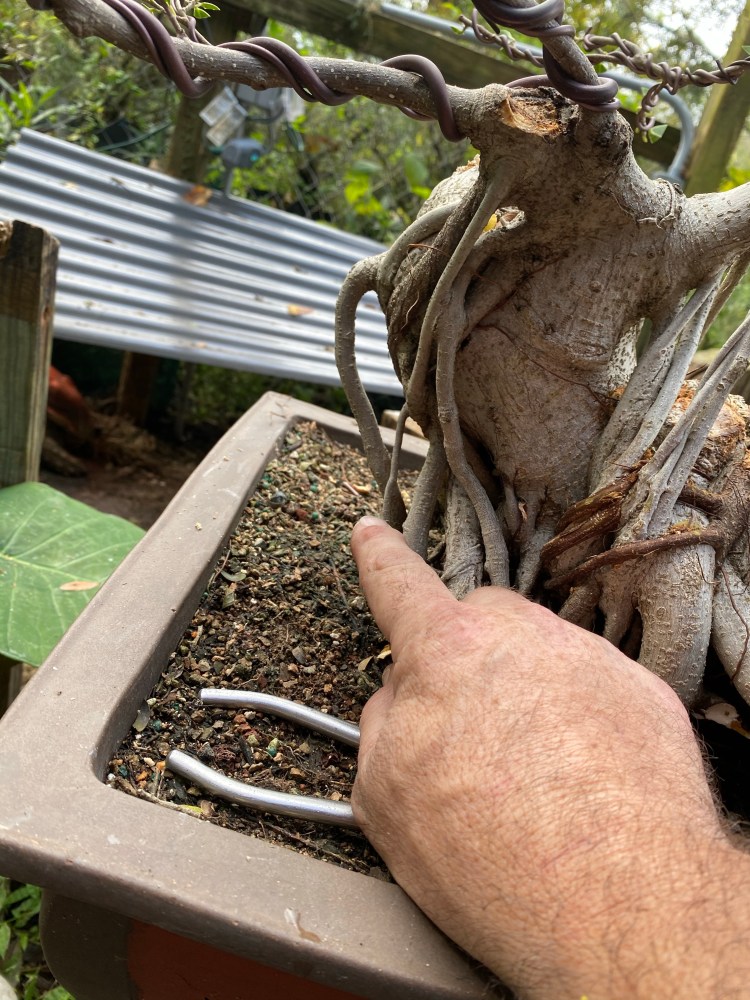
…about to here:
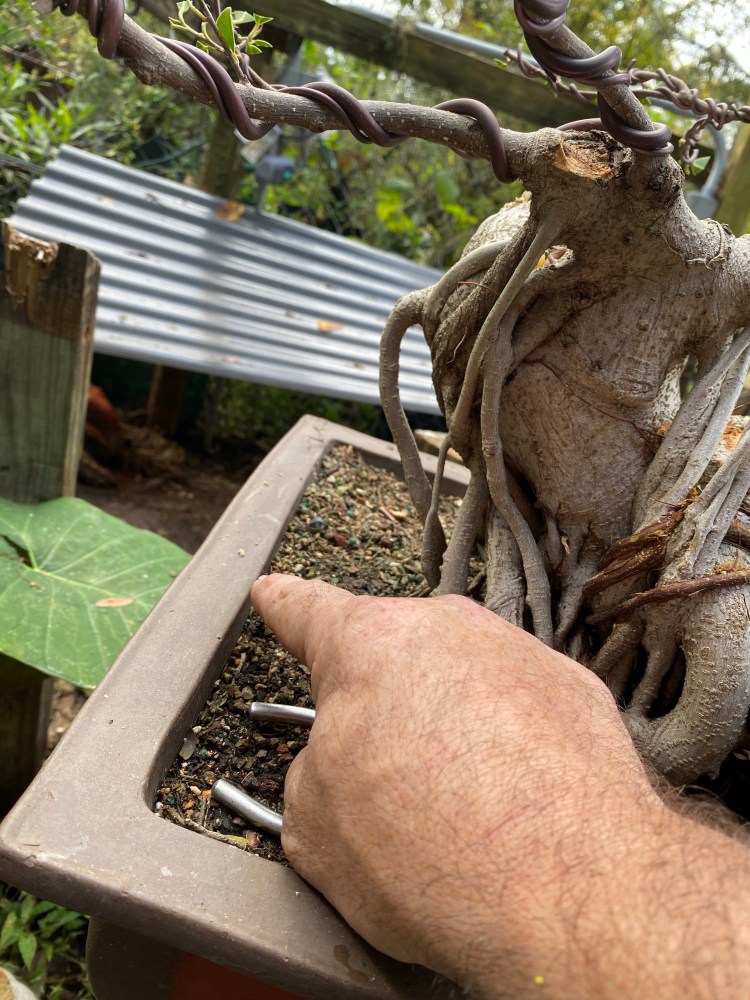 And I’m thinking a nice shallow, glazed, oval.
And I’m thinking a nice shallow, glazed, oval.
And that “apex” will have to do for now. I bent the top down to make a side branch.
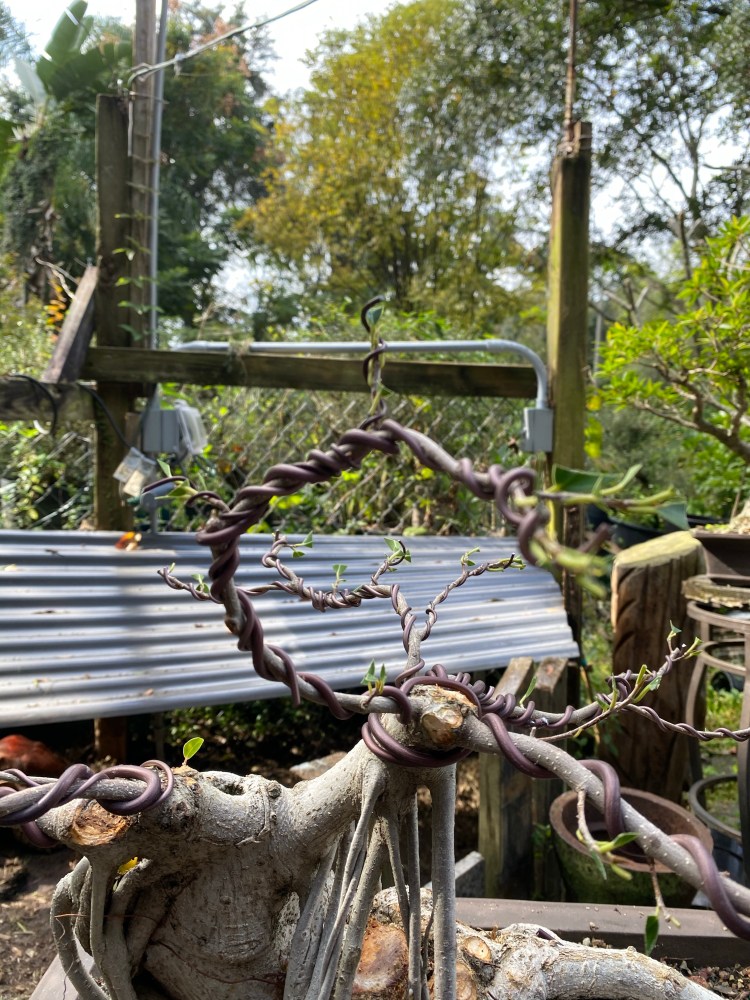
And (below) there are a few options for more of that crown I was talking about. They’re little but they’ll grow.
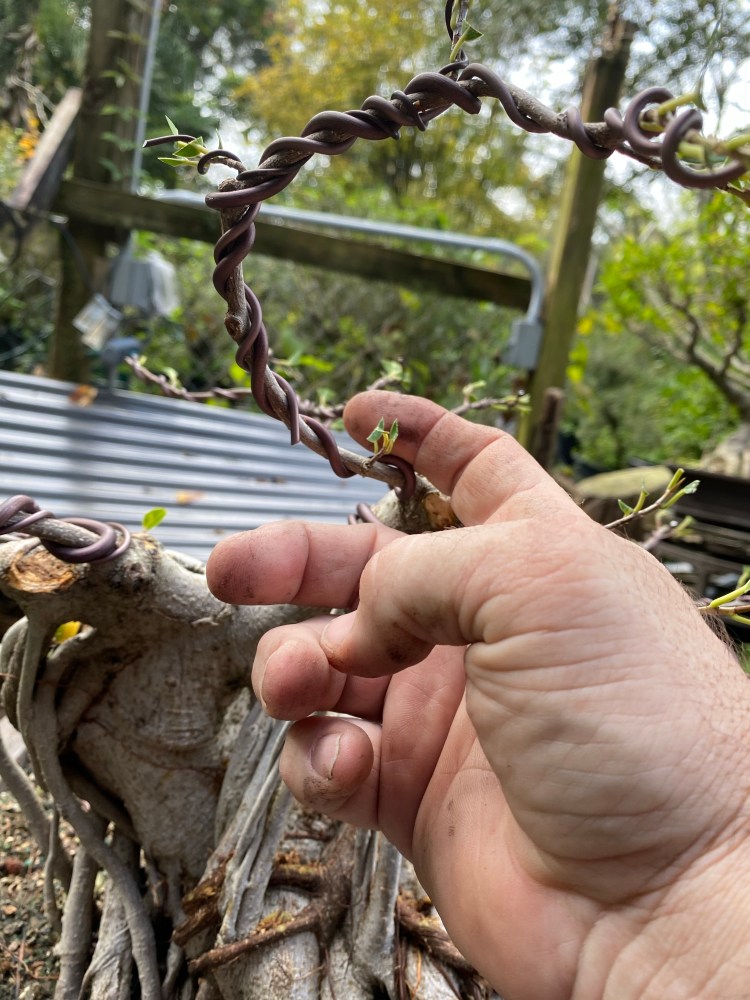
I really need one here:

Last few steps before it goes into “don’t touch, let it grow” mode.
Fertilizer. The soil it’s in is very compacted, and not suited for the high performance growth we need, but a repot isn’t going to happen now.

One trick you can do is to poke holes, using a chopstick (or that special tool some manufacturers make for that. There’s a Japanese name for it but I can’t remember it. A chopstick works just as well).
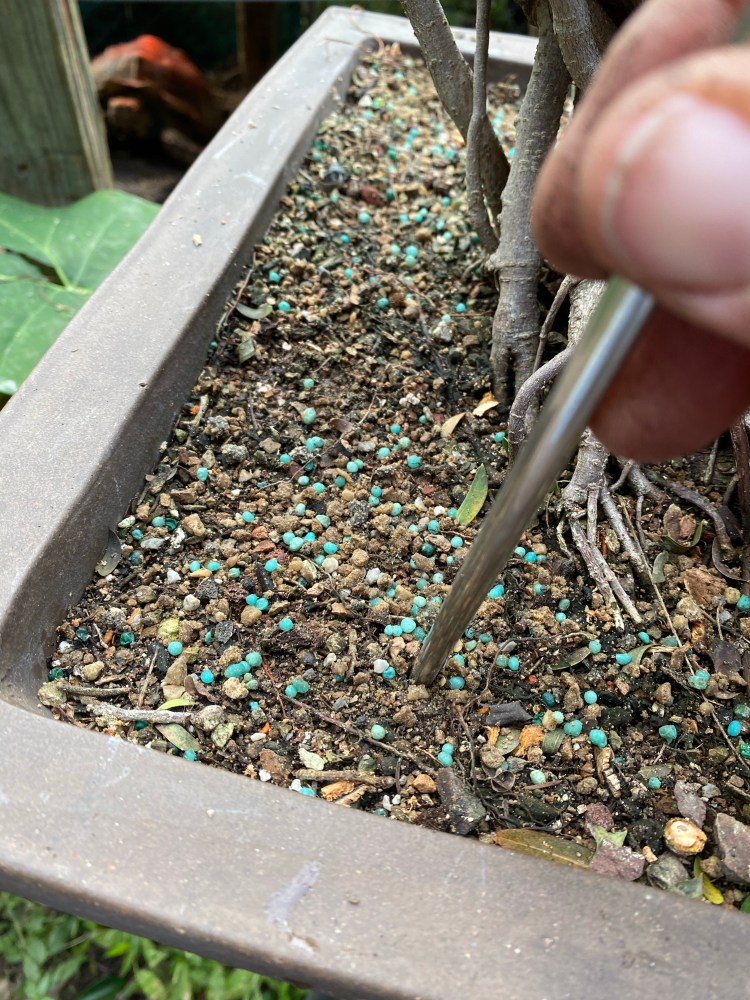
And that granular systemic insecticide I was talking about. I happen to have this brand handy but it’s the chemical you need, not the brand.
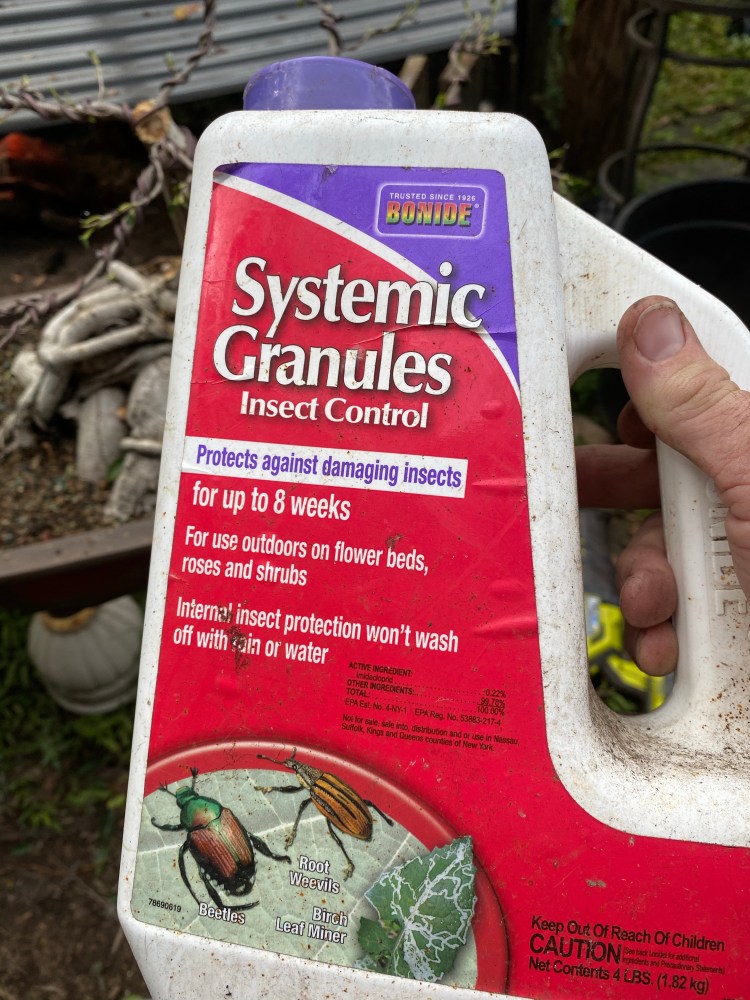
Imidacloprid to be precise. It’s systemic, which means the tree takes it into its cells. And I prefer granular, no spraying to breath in or kill beneficial bugs from overspray (yes, there are such things as beneficial bugs. I hate it on the forums when the constant intermediate recommends “nuking” a tree to kill bugs), so it’s a targeted application.
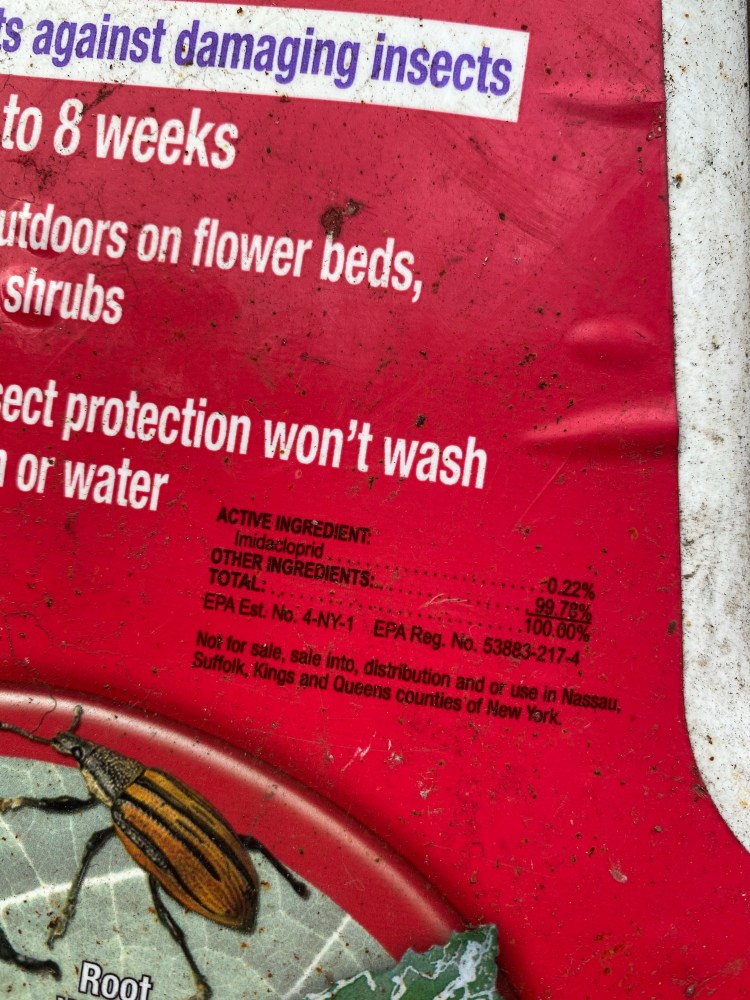
I’m not too happy with the top, but it’ll grow into it. Like the Baby New Year in that Rudolph animated show and his ears. It’ll stick out now, but when it’s mature it’ll be unnoticeable.

Now sing with me:
🎶 “Let it grow, let it grow…,”🎶
I may have missed this in a prior post, but when you say “let it grow” how long is that for, typically? Does that mean no directional pruning, no tip removal, etc? What about repotting?
LikeLike
There isn’t a typical time frame. Everything is seasonal (I tend to cover each tree as it’s being worked) Being it’s winter, this ficus should grow (very little pruning if any) until spring or early summer. The wire may need to come off in places, but probably not.
Repots generally happen in the warmer months for ficus. But each genus and species is different. There are few “general” rules for all bonsai. Each one is different. But, generally, let a tree grow about five sets of leaves, then prune to two sets, but that’s if you’re not trying to get a branch to elongate or thicken
LikeLike
Another bush in a pot. With root mess this time. To be…
…thrown in the bin.
LikeLike
Awww, you made me smile again. I love hate mail
LikeLiked by 2 people
This is not a hate mail. But the truth… can be hard sometimes. Especially if it’s you not listening to reason.
LikeLike
What is the blue/ green fertilizer pellets you are using?
LikeLike
It’s MiracleGro Shake ‘n Feed all purpose with organic components
LikeLike
Let the petty and jealous oust themselves with their own misguided vitriol.
Curious that one would return to view “bushes” and philosophical rants that they dont enjoy…
LikeLike
As always thanks for the informative and entertaining post, Adam
LikeLike
Thank you Sean
LikeLike
Any good alternatives to Imadacloprid? it appears to be banned in my state.
LikeLike
To treat otherwise means defoliating, bagging the leaves, then spraying first an insecticidal soap (any brand) , then an oil spray (like neem or volck) , then the soap again. All a week apart. Most bugs have at least four life stages, first egg, then juvenile or nymph, then pupal, kinda like a second egg stage, then adult. Some, like thrips, have a fifth where they grow wings and go to the next plant. By using different chemicals you are dealing with the different life stages.
LikeLike
That is unfortunate. Imidacloprid is a neonicitonide class chemical that is linked to bee and pollinator death. Many groups have come out against it. IF the plant does not need insects to pollinate flowers, then the pollinators are not harmed. Our Bonsai do not produce enough flowers to cause a hazard but the knee jerk legislation throws out very useful chemicals to prevent idiot off label usage.
LikeLike
I agree. I don’t use it on flowering trees at all. What’s more, you take a targeted approach (granular systemic) and make it illegal, and now you’re left with the broad spectrum, kill em all approach of sprays
LikeLike
I was intrigued with the turtles? Maybe I’ve forgotten, but I don’t recall seeing them before on your blog. Oh yeah, the try is nice too. 🙂 Thanks for sharing the knowledge.
LikeLike
I’ve had them for more than ten years. They’re sulcata tortoises
LikeLike